
Related
Topics
Guests
- Helen Caldicottone of the worlds most respected anti-nuclear activists. She was a founder and headed both Physicians For Social Responsibility and Womens Action For Nuclear Disarmament. Now she is president of the Nuclear Policy Research Institute. She has written a number of books, including “Nuclear Madness-What You Can Do” and “Missile Envy”
- Scott Petersonspokesperson for the Washington DC based Nuclear Energy Institute. The Nuclear Energy Institute is the policy and lobbying organization of the nuclear energy and technologies industry.
As a fourth hurricane prepares to hit Florida, we look at an emerging debate on global warming: could the increaesed use of nuclear power help end global warming? We are joined by longtime anti-nuclear activsit Dr. Helen Caldicott and Scott Peterson, from the Nuclear Energy Institute. [includes rush transcript]
Florida and the Bahamas are bracing for Hurricane Jeanne, which is churning westward in the Atlantic Ocean with winds over 100 miles per hour. If Jeanne hits Florida, it will be the fourth hurricane to hit the state this season. But as Florida braces, it is the Caribbean that has been hit the hardest by the Hurricanes. The government of the Bahamas has issued a warning to its citizens. Last weekend Haiti was devastated by Jeanne, which at the time was a tropical storm. It triggered flooding and mudslides.
More than 1,100 people have been killed in Haiti and more than 1,200 people are missing. The death toll is expected to rise well above 2,000. It also killed two people in Puerto Rico and 11 in the Dominican Republic. In Florida, the hurricanes killed 85 people and caused billions of dollars in damage. As hurricane after hurricane devastates the Caribbean and US coastal states, many are raising questions about the role global warming has played. Now, the nuclear industry is promoting nuclear power as a solution to global warming.
- Helen Caldicott, one of the worlds most respected anti-nuclear activists. She was a founder and headed both Physicians For Social Responsibility and Womens Action For Nuclear Disarmament. Now she is president of the Nuclear Policy Research Institute. She has written a number of books, including “Nuclear Madness-What You Can Do” and “Missile Envy”
- Scott Peterson, spokesperson for the Washington DC based Nuclear Energy Institute. The Nuclear Energy Institute is the policy and lobbying organization of the nuclear energy and technologies industry.
Transcript
AMY GOODMAN: We’re joined by Helen Caldicott, one of the world’s most respected anti-nuclear activists. She is a physician, founder of Women’s Action for Nuclear Disarmament, now president of the Nuclear Policy Research Institute. She’s written many books. Among them, Missile Envy, Nuclear Madness: What You Can Do. Scott Peterson is on the phone with us. Is he spokesperson for the D.C.-based Nuclear Energy Institute. Of we go first to Scott Peterson. Why is nuclear power, do you think, the answer?
SCOTT PETERSON: Well it’s not the answer. It’s one of the answers that we’re going to need to — if we plan to meet the electricity demands that we’re going to have in the near future, and that’s a 40% increase in electricity demands over the next 20 years. It’s also the largest clean air source of electricity that we have in the United States, producing electricity already for one of five homes and businesses. So, to meet the electricity demand that we know we’re going to have over the next 20 years and to make sure that we have sources of electricity that are clean air sources, including renewables, hydropower, and nuclear, we have to maintain the nuclear energy supplies that we have today and we have to start on a fairly robust expansion program for nuclear energy, making sure that we build reactors that continue to be safe, and continue to provide affordable electricity for consumers, but also continue to provide clear air benefits that have led to really an improvement in our air quality over the past several years in the United States.
AMY GOODMAN: Helen Caldicott.
DR. HELEN CALDICOTT: Well, I have just discovered from the Department of Energy’s data, that the enrichment of uranium produces 93% per year of the C.F.C. gas in this country, which is currently banned under the Montreal Protocol because it produces destruction of the ozone layer. In Australia, we’ve got an epidemic of skin cancer because the ozone is so thin. C.F.C. gas, which is the refrigerant gas banned, is up to 20 times more potent global warmer than carbon dioxide, which accounts for 15% of global warming. But also, to enrich uranium, they use 2 two 1,000 megawatt coal power plants to enrich the uranium itself for nuclear power. Massive quantities of carbon dioxide are produced in that very process but also in building the reactors, storing the radioactive waste for hundreds of thousands of years. The other thing is that nuclear power releases millions of Curies of unregulated radiation into the air every year of noble gases and of Tritium, which is very biologically dangerous and very carcinogenic. And it also creates massive quantities of radioactive waste, which lasts for up to half a million years, which inevitably will leak into the Ecosphere, bioconcentrate in each step of the food chain—the algae, the crustaceans, the little fish, the big fish. We can’t taste the radiation, we can’t smell it, we can’t see it. Cancer takes years to evolve. If I sneeze on you, you’re sneezing in two days because the incubation time for a cold is two days. But for cancer, when you’ve been exposed to radiation, its anytime from 5 to 60 years. Cancer doesn’t wear a little flag saying what it was caused by years ago. What is predicted medically because of the nuclear wastes from nuclear power is epidemics of particularly childhood cancer, because they’re very sensitive to radiation, leukemia, and genetic disease for the rest of time. And we’re not the only species that have genes and get cancer. All other species do as well. So, a nuclear power is extraordinarily biologically dangerous. It produces filthy air with radioactive isotopes, carbon dioxide, and C.F.C. gas. The nuclear industry has been lying in its advertisements, being put out consistently on N.P.R. and P.B.S. and the like. You mustn’t lie when you’re talking about medical and environmental conditions. That’s scientifically inappropriate and unethical to lie.
JUAN GONZALEZ: Scott Peterson, your response and also, given the fact that in the United States there hasn’t been a new nuclear plant started to be built in decades, why would you expect the American public to suddenly want to change their perspective on the dangers of nuclear power?
SCOTT PETERSON: The American public’s perspective on nuclear energy has actually been supportive for many years now, because they recognize the benefits that they get from nuclear energy, and they also recognize the safety of our plants, particularly over the last decade. 64% of the U.S. Public believes that we should build more nuclear plants, and we are now setting the stage in this country, working both with industry and government to begin building advanced reactors that have even better safety features. They’re going to be more cost effective to build so the consumer electricity rates are going to be lower. They’re also going to be built in a manner they’re takes advantage of existing nuclear power plants so we’re building them at the same sites, and actually, using less land, and taking advantage of the land and the transmission systems that we already have. So, we’re taking a number of steps to make sure that we can meet consumer electricity demands as they continue to rise in the future. But meet them in a way that also protects the environment, and recognizes that we need to make changes in how we look at our air quality and how we combine the imperatives of having electricity and also protecting our environment. If you took the nuclear plants that we have today out of the electricity-
JUAN GONZALEZ: But if I can interrupt you for one second. What about the other part of my question, which is your response to Helen Caldicott’s claims of the actual polluting nature of nuclear plants?
SCOTT PETERSON: I wouldn’t know where to begin with some of the claims, because a lot of them are just not factually correct.
DR. HELEN CALDICOTT: But they are you see, because I have the data from the Department of Energy—They’re correct.
SCOTT PETERSON: We meet every federal regulation on the books from the Nuclear Regulatory Commission in terms of radiation released from our plants. We meet every single requirement. Our plants are monitored daily by the Nuclear Regulatory Commission to make sure that we’re well within those limits. So, we meet not only the N.R.C. limits, we meet environmental limits in terms of the temperature of water that has to come out of our plants as we use cooling water. So, I would have to say that Helen Caldicott as usual, is engaged in a scare tactic with the public, giving them false information. For example, the uranium enrichment of our fuel for every single nuclear power plant is powered by a nuclear power plant. We use now nuclear power plants to power the conversion of uranium into our fuel, so there’s no emissions even in that process. A lot has happened in the industry in the last decade. To make our industry even cleaner in terms of the emissions than what it had been in the production of nuclear power, and I would just say that there are a number of life cycle emission studies that have been done in the last ten years that show that nuclear energy for the environment along with renewables are the cleanest sources of electricity from beginning to end for consumers and for the environment.
AMY GOODMAN: One of the early controversies in the Bush administration was who vice president Dick Cheney consulted with in his energy task force in shaping energy policy. Was your organization, Scott Peterson, the nuclear energy whole consortium of nuclear energy groups consulted with by Vice President Cheney?
SCOTT PETERSON: We typically try to speak to all new leadership that comes into Washington whether it’s an administration or members of Congress. We talk to them about energy policy and the importance of nuclear energy.
AMY GOODMAN: And did you meet with Vice president Cheney, did the actual Nuclear Energy Institute meet with Vice president Cheney?
SCOTT PETERSON: We did have a representative as part of the meetings that he had with several groups, including environmentalists. So, we —
AMY GOODMAN: Which environmentalists were with you?
SCOTT PETERSON: We were not in a meeting with environmentalists. He had several meetings with different groups.
AMY GOODMAN: You mean that he told you about but you didn’t know — you weren’t there.
SCOTT PETERSON: I was personally not at the meetings, so I don’t know who was in attendance at the meeting.
AMY GOODMAN: Cause we’re still trying to find out who it was that Vice president Dick Cheney met with in shaping his energy policy, but how important, Dr. Helen Caldicott is nuclear power as part of the planks that he has set forward?
DR. HELEN CALDICOTT: Vice president Cheney wants to build up to 50 new nuclear power plants in the next 20 years, terribly dangerous from a biological and medical perspective. As a physician who treats children with cystic fibrosis, the commonest genetic disease of childhood, most and fatal, and there are 3,000 such diseases, I just dread to think what nuclear power will do over — over the future generations. We are leaving a legacy to future generations, which will be horrendous.
SCOTT PETERSON: I think if you look at the health benefits of nuclear energy, though, Helen, you have to agree that where you have major urban areas that need electricity but are now coping with particles in air that cause asthma and other breathing disorders, we have to have cleaner sources of electricity.
DR. HELEN CALDICOTT: So, nuclear power —- you know, produces massive quantities of -—
SCOTT PETERSON: It’s not just the industry, it’s M.I.T. and Harvard, it’s Princeton, it’s the Earth Institute at Columbia university and several other research that has been done over the last few years that point to the need for more nuclear power plants in addition to renewable sources of electricity to provide that electricity and maintain our health and our air quality into the future.
JUAN GONZALEZ: Scott Peterson, let me ask you about another aspect of this issue which is the byproduct, the waste product of nuclear plants. Our nation is still battling over what it’s going to do with the nuclear waste from the current — from the current nuclear energy industry, and the continuing battle over Yucca mountain. Wouldn’t more plants only exacerbate the problem of this highly radioactive nuclear waste?
SCOTT PETERSON: Well, all sources of energy production have a byproduct. And we have been managing the used fuel from reactors on site, waiting for this federal government solution for a permanent repository. The government has made progress and they have selected a site in the Nevada desert, and they are in the process now of developing a license application, they would submit to the Nuclear Regulatory Commission, which must approve this site. So, we’re looking forward to about the 2010 time frame when this repository would be open, and ready to accept fuel from our sites.
DR. HELEN CALDICOTT: OK, this material —
AMY GOODMAN: Dr. Helen Caldicott.
SCOTT PETERSON: We have to have a repository for the fuel there is no question about that. And we also have new technology. It will also we available in the future for the quality and quantity of this fuel.
DR. HELEN CALDICOTT: This material is radioactive for the next half million years. This material — I can’t get a word in edgewise.
AMY GOODMAN: Dr. Helen Caldicott.
DR. HELEN CALDICOTT: Thank you. This material is radioactive for up to half a million dollar years and as I said will leak inevitably into the biosphere, get into the water and get into our food chains and produce cancer, leukemia and genetic diseases for the rest of time. What we are doing is really criminal. And I think the best person who talked about is was Einstein when he said that the splitting of atom changed everything except man’s mode of thinking thus we drift towards unparalleled catastrophe. Nuclear energy makes 20% of the electricity people currently use. Europe has the same standard of living as America and uses 50% less electricity because they conserve. You can turn your clothes dryers off, hang your cloth outside, let the nuclear reactor in the sky, and dry your cloth hanging them by the furnace in the winter. There are many ways to conserve energy. But we have not focused on one very important area, and that is terrorism. You have got a reactor here in New York, 35 miles from New York, three reactors, actually. In a 1,000 megawatt nuclear power plant is as much long lived radiation released by the explosion of 1,000 Hiroshima-sized bombs. And in the cooling pools next to the reactor with is 30 time as much as that. The reactor itself is protected by a very thick containment vessel of concrete, but the cooling pool is protected by the same construction as a Kmart roof. You could fly a small plain into that cooling pool. I could melt Indian Point Dam in a couple of hours. That’s very easy, there’s many ways to do it. If that cooling pool melts and burns and the radiation blows towards New York with weather conditions prevailing such that it would, millions of people will be irradiated and die of acute radiation illness with their hair falling out, vomiting and bleeding to death within two weeks. There would be an epidemic of leukemia five years later. Solid cancers would appear 15 to 60 years later. Up to a quarter million men would be rendered temporarily sterile. Up to quarter of million women would stop menstruating, many permanently. There would be 1500 spontaneous abortions, many babies born with tiny heads, microcephaly, because of the developing neurological system is very susceptible to radiation. There would be Cretins born and the like. We’re talking about a medical catastrophe that…
AMY GOODMAN: Scott Peterson, your response very briefly. We have 15 seconds.
SCOTT PETERSON: I have to say if you listen to Helen, she makes the —- she just really uses a lot of scare tactics to try to portray a picture that’s simply is not going to happen. We have tremendous security around those facilities. There have been a number of studies done since 9/11 both by the industry and the Nuclear Regulatory Commission and other independent agencies that showed that even if a wide body aircraft were to go into our nuclear power plants -—
AMY GOODMAN: Three seconds.
DR. HELEN CALDICOTT: We have a conference in Chicago —
SCOTT PETERSON: That wouldn’t happen.
DR. HELEN CALDICOTT: —- on October 15 and 16, called Nuclear Power in Children’s Health. Go to our website, nuclearpolicy.org, find out about it. Come, because Chicago is surrounded by 14 nuclear power plants. Many are dilapidated and -—
AMY GOODMAN: Helen Caldicott and Scott Peterson, thank you very much. Their websites will be on ours at democracynow.org.

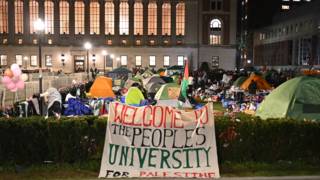
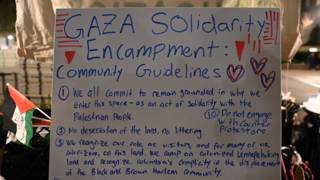
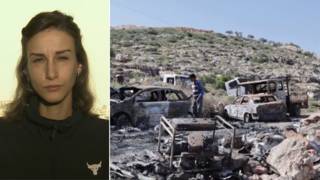






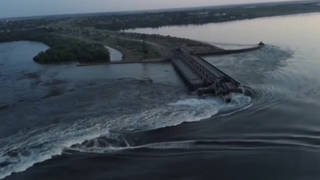
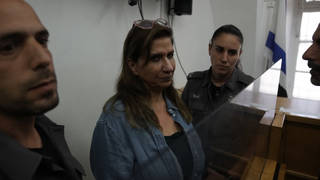
Media Options